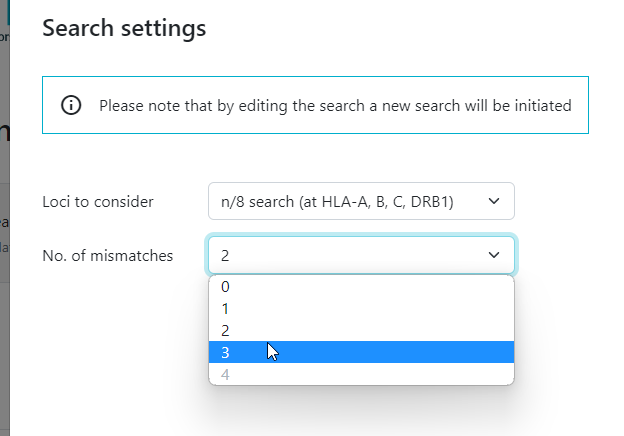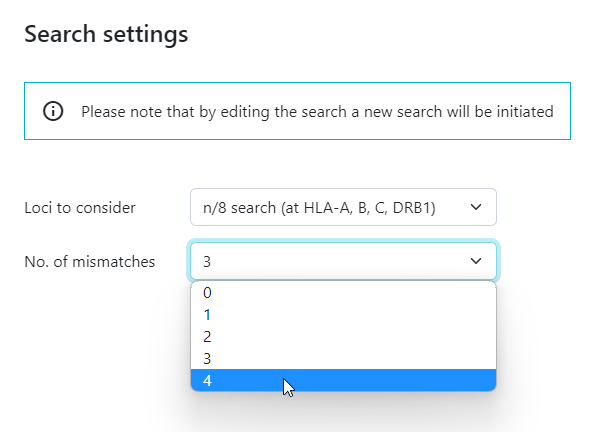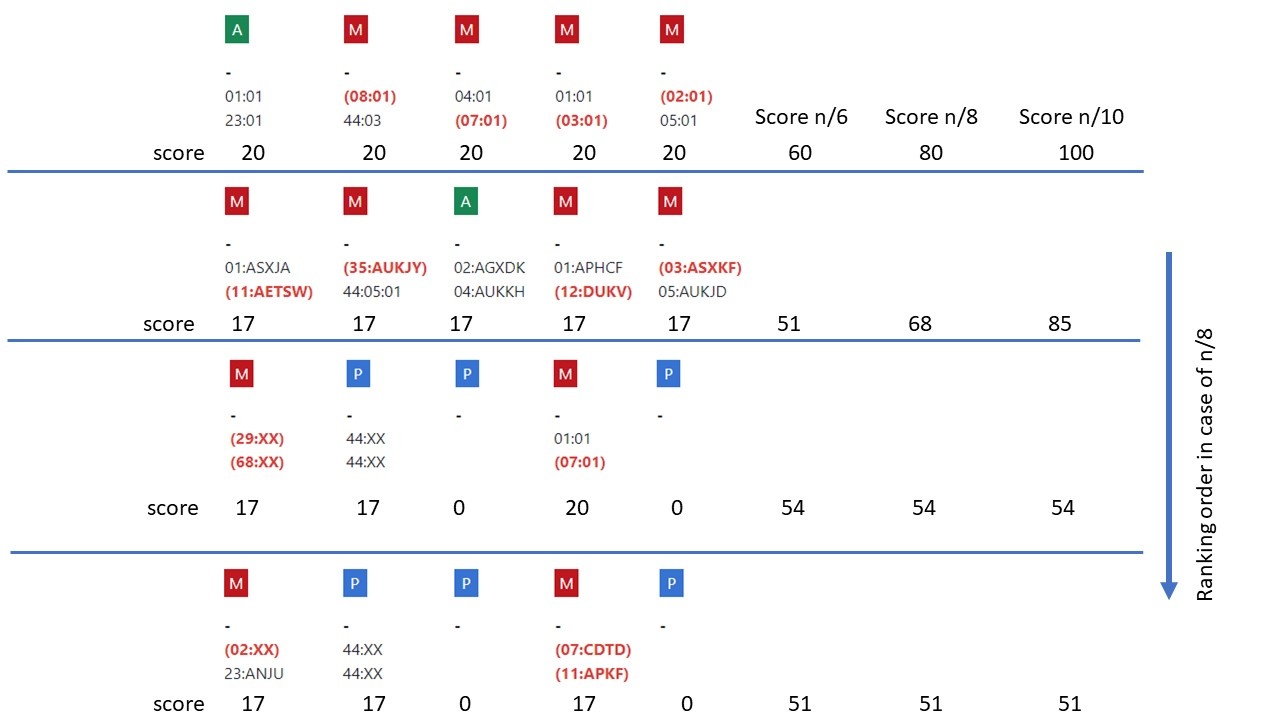

Both the UK and USA guidelines for cord blood selection recommend three and four mismatches as suitable options for patients with high-risk leukemia and for treatment-resistant types of blood cancer. Some of the WMDA member organisations have implemented standard procedures to run a routine cord search with up to four mismatches. Therefore, WMDA is implementing this option in Search & Match Service as well.
At the moment, the Search & Match Service (with the Hap-E Search matching algorithm) is providing the full list of potential cord blood units, when a three and/or four mismatch search is performed. These lists are commonly very long and therefore search coordinators currently find it difficult to select the most suitable potential stem cell source in Search & Match when they perform a three and/or four mismatch CBU search.
The match list presents all possible options. In order to help search coordinators to select the best potential stem cell source, WMDA will be implementing additional features to assist search coordinators, you can read the details of these features, below.
Three and four mismatch searches have been implemented for cord blood searches in Search & Match Service. This is a resource intensive service , therefore you first need to perform a two mismatch cord blood search before you are able start a three mismatch cord blood search:


In the legacy version of Search & Match Service, no overall match probabilities calculations (P0, P1, P2) for cord blood results were available. The sorting was performed within the match class (i.e. 5/8. 4/8) based on the Total Nucleated Cell (TNC) or CD34+ cell counts (depending on what a search coordinator prefers). This has been implemented in the same way in the updated version of Search & Match Service.
In the Search & Match Service the number of search results can be bigger, as the Hap-E matching algorithm returns more potential matched cord blood units and the service no longer limits a coordinator to only 2 000 search results. If you experience a high number of potential cord blood search results you can, for example, filter on the minimum TNC, minimum CD34+ or by selecting certain registries or mismatch locations.
Three and/or four mismatch cord blood search results do not have any match probabilities calculated, the results are currently sorted within their match class (e.g. 5/8, 4/8) only by TNC or CD34+. Many of cord blood units tend to be low probability options to be selected for a patient in need of a transplant, because these cord blood units have low HLA resolution typing or missing allele typing.
This means that poorly matched cord blood units with a high cell dose are at the top of the match list and cord blood units that have a better probability to match the patient with a lower cell dose, appear lower on the list of results. For a search coordinator, it is harder to identify the best possible cord blood unit, because of the increased number of valid potential matches.
In an effort to improve the search coordinator's experience when performing three and/or four mismatch cord blood searches, WMDA has developed several features that should improve the efficiency of finding suitable cord blood units. These are:
It is generally true that the better HLA-typed a stem cell source (donor/cord blood) is, the higher the probability of a potential match it is. As WMDA is currently not able to provide match probabilities on 3 and 4 mismatched cord blood searches, WMDA will be implementing an interim score based approach. Find below the explanation:
Because of the way the scores are assigned per locus, a cord blood unit with typing at HLA-C when doing an n/8 search will always be ranked higher than a cord blood unit with high resolution typing at 3 loci and no typing at HLA-C.
Below you can find some examples.

WMDA aims to implement calculation of actual match probabilities, because this would provide a better way of ranking search results than by using the above mentioned "scored" ranking. It will however, require a lot of work to develop this feature, as it will impact core elements of the matching algorithms. This therefore needs to be done with great care and will be thoroughly tested in order to make sure no part of the algorithms is accidentally broken as a result of the added functionality.